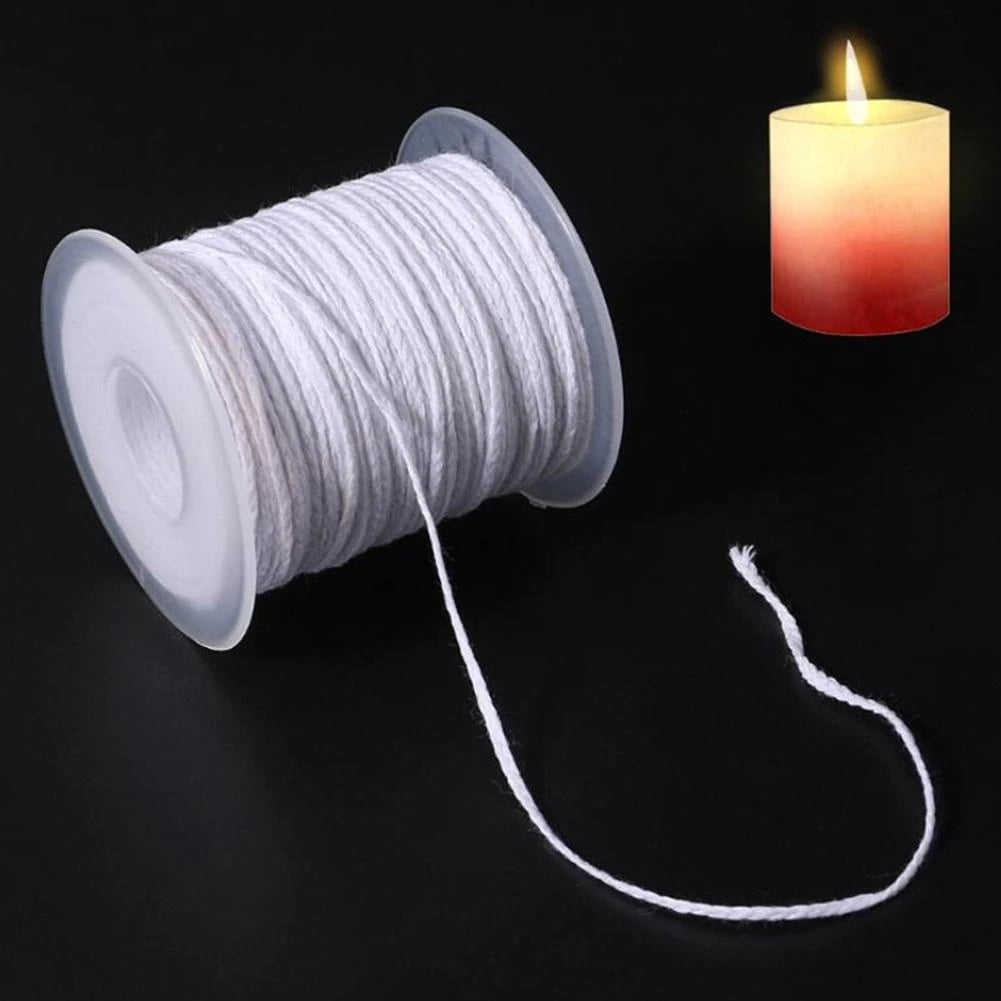Candle making can be a fulfilling and creative hobby, but even the most experienced candle makers may encounter a frustrating phenomenon known as tunneling. At first glance, tunneling may appear to be a minor issue, but it can greatly affect the overall quality and burn time of your candles. So, what causes tunneling in candle making? Understanding the reasons behind this common problem is essential for any candle maker looking to create beautiful, long-lasting candles.
Tunneling occurs when a candle burns down the center, leaving wax along the edges untouched. This results in an uneven burn and wasted wax. In this article, we will delve into the science behind tunneling – how and why it occurs. We will also explore various factors that contribute to tunneling, such as wax type and wick size, as well as environmental factors like temperature and drafts.
By understanding the root causes of tunneling, you can develop effective strategies to prevent it from happening in your future candle making endeavors. Whether you are new to candle making or have been crafting candles for years, this article will provide valuable insights and techniques to help you overcome the challenge of tunneling and create stunning, high-quality candles that burn evenly from start to finish.
The Science Behind Tunneling
Tunneling in candle making is a common issue that many candle makers face. Understanding the science behind tunneling can help candle makers prevent this phenomenon and create beautiful, long-lasting candles. Tunneling occurs when the candle burns down the center, leaving wax along the sides of the container. This creates a hole or tunnel in the middle of the candle, making it unsightly and shortening its burn time.
The main reason for tunneling in candles is an improper ratio of wax to wick size. When the wick is too small for the diameter of the candle, it will not be able to melt enough wax to create an even pool across the entire surface. Instead, it will only melt a small portion of wax directly around it, causing tunneling to occur.
In addition to an improper wax to wick ratio, environmental factors such as drafts and temperature can also contribute to tunneling in candles. Drafts can cause uneven burning by directing heat away from certain areas of the candle, while extreme temperatures can affect how quickly or slowly a candle burns. It’s important for candle makers to take these factors into consideration when creating their candles in order to prevent tunneling and ensure an even burn.
| Causes of Tunneling | Factors |
|---|---|
| Improper wax to wick ratio | Wax type and wick size |
| Environmental factors | Temperature and drafts |
Factors That Contribute to Tunneling
Candle making is a delicate craft that requires careful consideration of various factors to ensure the production of high-quality, aesthetically pleasing candles. One of the most common issues encountered by candle makers is tunneling, which refers to the formation of a hole or tunnel down the center of a candle, leaving behind unburned wax along the edges. Understanding the factors that contribute to tunneling is crucial in addressing and preventing this phenomenon.
One significant factor that contributes to tunneling in candle making is the type of wax used. Different waxes have varying melting points, densities, and compositions, all of which can impact how a candle burns.
For instance, paraffin wax typically has a higher melting point and can be more prone to tunneling if not properly formulated or if the wick size is not appropriate for the specific type of wax. On the other hand, soy wax, with its lower melting point and softer composition, may also experience tunneling if not paired with an adequate-sized wick.
In addition to wax type, another influential factor in tunneling is the size of the wick used in candle making. A wick that is too small for the diameter of the candle will struggle to create a wide enough melt pool to consume all of the wax efficiently, leading to tunneling.
Conversely, a wick that is too large may generate excessive heat and cause rapid burning without allowing the outer edges of the candle to fully melt and join with the rest of the pool. Finding the right balance between wax type and wick size is essential in minimizing tunneling issues in candle making.
| Factors Contributing to Tunneling | Description |
|---|---|
| Wax Type | Different types of wax have varying melting points and compositions that can impact how a candle burns. |
| Wick Size | The size of the wick used in relation to the diameter of the candle can affect how efficiently wax is consumed during burning. |
Environmental Factors
When it comes to the art of candle making, environmental factors play a crucial role in determining the outcome of your candles. Temperature and drafts are two key environmental factors that can contribute to tunneling in candle making if not carefully managed.
Impact of Temperature
The temperature at which candles are allowed to cool and solidify can have a significant impact on whether tunneling occurs. When candles cool too quickly, especially in a cold environment, they may not have the opportunity to form an even wax pool across the entire surface. This can lead to the development of a tunnel down the center of the candle, with unused wax remaining along the sides.
Effect of Drafts
Drafts can also disrupt the even burn of a candle, leading to tunneling. Air movement caused by drafts can interfere with the normal combustion process, causing uneven melting and subsequent tunneling. It is important to avoid placing candles in drafty areas or near open windows where air movement could be an issue.
By being mindful of these environmental factors and taking steps to control them, such as allowing candles to cool at room temperature without drafts, you can minimize the risk of tunneling occurring in your homemade candles.
Overall, proper attention to temperature and drafts during the candle making process is essential for producing high-quality candles that burn evenly and beautifully without experiencing tunneling issues.
Preventing Tunneling
When it comes to candle making, tunneling can be a common issue that many beginners and experienced crafters encounter. Understanding the causes of tunneling is essential in order to prevent it from happening and create beautiful, long-lasting candles. To help you achieve success in your candle making endeavors, here are some techniques and tips to prevent tunneling:
1. Proper Wick Selection: Choosing the right wick for your candle is crucial in preventing tunneling. Consider using a wick that is properly sized for the diameter of your candle. A wick that is too small can lead to incomplete burning, while a wick that is too large can cause excessive heat and lead to tunneling.
2. Use High-Quality Wax: The type of wax you use can also impact the likelihood of tunneling. Opt for high-quality, clean-burning wax that has been specifically formulated for container candles. Avoid using paraffin wax or low-quality blends, as these may be more prone to tunneling.
3. Avoid Drafts and Control Temperature: Environmental factors such as drafts and temperature can contribute to tunneling in candles. Ensure that your candles are allowed to cool and solidify at room temperature without any drafts present. Additionally, try to store your candles in a cool, dry place to prevent any melting or warping that could lead to tunneling.
By implementing these techniques and tips into your candle making process, you can significantly reduce the likelihood of experiencing tunneling in your finished products, allowing you to create beautiful, high-quality candles every time.
Troubleshooting Tunneling
Identifying the Problem
When a candle begins to tunnel, it means that the wax is not melting evenly across the entire surface of the candle. Instead, a hole forms down the center, leaving unused wax along the edges. This not only diminishes the aesthetic appeal of the candle but also reduces its burn time. To fix a tunneling candle, it is crucial to identify the root cause of the issue and take appropriate action.
Using Aluminum Foil
An effective method for fixing a tunneling candle involves using aluminum foil. Simply wrap a piece of foil around the top of the candle, ensuring that it covers any exposed wax around the edges. The foil helps to trap heat and encourage even melting, allowing the excess wax along the edges to melt and fill in the tunnel.
Trimming and Re-Positioning Wick
Another potential solution for tunneling involves trimming and re-positioning the wick. A long or improperly placed wick can contribute to uneven melting, leading to tunneling. Trim the wick to an appropriate length (around 1/4 inch) and re-position it towards the center of the candle if necessary. Doing so will promote an even burn and prevent future tunneling issues.
By implementing these troubleshooting techniques, candle makers can salvage tunneling candles and prevent further occurrences by addressing underlying causes such as improper wick size or placement.
The Impact of Fragrance Oils and Additives on Tunneling
When it comes to candle making, the use of fragrance oils and additives can have a significant impact on tunneling. Tunneling occurs when the wax burns down the center of the candle, leaving excess wax along the sides. This not only affects the aesthetics of the candle but also reduces its burn time. Therefore, it is important to understand how fragrance oils and additives contribute to this phenomenon in order to create high-quality candles.
There are various factors related to fragrance oils and additives that can contribute to tunneling in candle making. These can include the type of fragrance oil used, as well as any additional additives such as colorants or other enhancers. The viscosity and chemical composition of these elements can affect how the candle burns, potentially leading to tunneling if not carefully considered in the candle making process.
To prevent tunneling caused by fragrance oils and additives, here are some techniques and tips that can be implemented during candle making:
- Use fragrance oils and additives that are specifically formulated for use in candles
- Carefully measure and follow recommended usage rates for fragrance oils and additives
- Experiment with different combinations of fragrances and additives to find the best balance for clean burning
By paying close attention to the impact of fragrance oils and additives on tunneling, candle makers can take proactive steps to avoid this issue and produce beautiful, long-lasting candles that meet their desired aesthetic and performance standards.
Conclusion
In conclusion, tunneling is a common issue in candle making that can be frustrating for both beginners and experienced candle makers. Understanding the science behind tunneling, including how and why it occurs, is essential for preventing this phenomenon. Factors such as the type of wax used, the size of the wick, environmental conditions like temperature and drafts, as well as the impact of fragrance oils and additives all play a role in causing tunneling in candles.
To avoid tunneling and create beautiful, long-lasting candles, it’s important to pay attention to these contributing factors. Choosing the right wax type and wick size for your specific candle-making project is crucial. Additionally, maintaining consistent environmental conditions during the cooling process can help prevent tunneling. Using fragrance oils and additives sparingly can also contribute to a more even burn and reduce the risk of tunneling.
By empowering candle makers with knowledge about what causes tunneling in candle making, as well as techniques for preventing and troubleshooting it, we can ensure that every candle-making endeavor results in stunning, high-quality candles. With careful attention to detail and an understanding of the science behind tunneling, candle makers can overcome this common challenge and create candles that burn cleanly and beautifully from start to finish.
Frequently Asked Questions
How Do You Prevent Candle Tunneling?
Candle tunneling can be prevented by ensuring that the first burn is long enough to create a full melt pool across the entire diameter of the candle. This means allowing the wax to liquefy all the way to the edges, which may take several hours depending on the size of the candle.
Trimming the wick to 1/4 inch before each use and avoiding drafts can also help prevent tunneling.
How Do You Prevent Sinkholes in Candles?
Sinkholes in candles can be prevented by properly pouring and cooling the wax. It’s important to monitor the temperature of the wax as it cools and prevent rapid cooling, which can lead to sinkholes. Using a heat gun or hairdryer to carefully melt and level any sinkholes that do occur can also help salvage the appearance of your candle.
Why Is My Candle Making a Hole in the Middle?
A hole in the middle of a burning candle could be caused by several factors, including not allowing enough time for a full melt pool during previous burns, untrimmed wicks, or drafts that disrupt an even burn.
To address this issue, it’s important to ensure that each burn creates a full melt pool across the entire diameter of the candle, trim wicks before each use, and avoid placing candles in drafty areas.

Welcome to my candle making blog! In this blog, I will be sharing my tips and tricks for making candles. I will also be sharing some of my favorite recipes.





